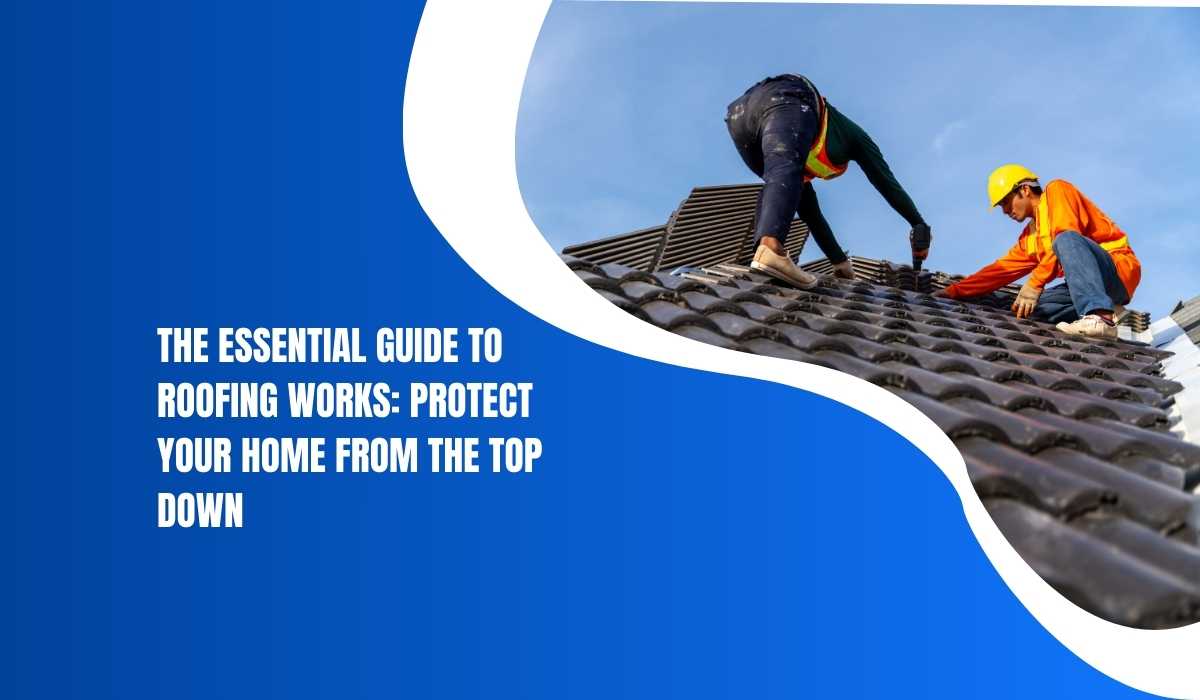Your home’s roof is one of the most critical parts of your property. It shields you from weather elements like rain, wind, heat, and cold, while also playing a vital role in your home’s energy efficiency. But how much attention do we give to roofing works dubai until something goes wrong? More often than not, it’s easy to overlook roof maintenance until leaks start or worse, structural damage begins. This article is designed to help you understand the importance of roofing works, the types of roofing materials available, and when to call in the professionals.
Why Roof Maintenance is a Must
It’s tempting to think that once your roof is installed, it will last forever. However, like any part of your house, the roof is susceptible to wear and tear. Whether it’s extreme weather conditions or natural aging, maintaining the roof is essential to avoid costly repairs or replacements down the line.
Ignoring roof maintenance can lead to problems such as:
- Water Leaks: Water can seep into your home, causing structural damage, mold growth, and damage to personal belongings.
- Poor Insulation: A poorly maintained roof can lead to heat loss in the winter and increased cooling costs in the summer.
- Roof Collapse: In extreme cases, an old, neglected roof can collapse, putting your entire home at risk.
Roofing works involve regular inspection, repairs, and replacement when necessary. Regular maintenance ensures your roof remains in top condition, protecting your home from potential disasters.
The Importance of Professional Roofing Services
While it might be tempting to attempt DIY roof repairs, roofing work is far from a simple task. Roofing specialists have the necessary skills, tools, and safety equipment to handle the job safely and effectively.
Some key reasons to hire a professional for roofing works include:
- Expertise and Experience: Professional roofers know the ins and outs of various roofing systems and can spot potential problems before they escalate.
- Safety: Working at heights is dangerous, and roof work requires the use of safety equipment. Professionals follow strict safety protocols to avoid accidents.
- Warranty Protection: Most reputable roofing companies offer warranties on both labor and materials, giving you peace of mind in case anything goes wrong.
- Quality Materials: Professionals have access to high-quality roofing materials that are not always available to the public.
By hiring a roofing company, you are ensuring the longevity of your roof and the overall safety of your home.
Types of Roofing Materials Available
Choosing the right roofing material for your home is essential for both aesthetic appeal and functionality. Different types of roofing materials are available, each with its benefits and drawbacks. Here’s a breakdown of some popular roofing materials:
| Roofing Material | Advantages | Disadvantages |
| Asphalt Shingles | Affordable, easy to install, widely available | Short lifespan (15-30 years), less eco-friendly |
| Metal Roofing | Durable, energy-efficient, resistant to extreme weather | Expensive installation, noisy during rain |
| Clay Tiles | Long-lasting, fire-resistant, aesthetic appeal | Heavy, expensive, may require additional roof support |
| Wood Shingles | Natural look, eco-friendly, excellent insulation | Prone to rot, requires maintenance |
| Slate Roofing | Durable, long-lasting, fire-resistant | Very heavy, expensive, labor-intensive installation |
Each material offers unique benefits, so choosing the right one depends on your budget, location, and personal preferences.

Signs Your Roof Needs Repair or Replacement
Not all roofing issues are obvious. Sometimes, the damage isn’t visible until it has progressed significantly. Here are some warning signs that your roof may need attention:
1. Leaks and Water Stains
If you notice water stains on your ceilings or walls, it’s time to check your roof for leaks. Even a small leak can cause significant damage over time.
2. Missing or Broken Shingles
If shingles are missing or damaged, your roof’s protection against water is compromised. Replacing them quickly can prevent further damage to the structure.
3. Sagging Roof
A sagging roof is a sign that there is structural damage or water accumulation. This is a serious problem that needs immediate attention.
4. Clogged Gutters
Gutters filled with debris can indicate that your roof is not properly shedding water. Clogged gutters can cause water to pool on the roof, which can lead to leaks and structural damage.
5. Age of the Roof
Most roofing materials have a lifespan. If your roof is nearing the end of its expected life, it may be time to consider replacement, even if there are no visible signs of damage.
Also Read:-https://kyalu.in/roofing-problems-heres-what-you-need-to-know-before-starting/
Roof Installation: What You Need to Know
Installing a new roof or replacing an old one can seem like an overwhelming task, but understanding the process can make it easier. A typical roof installation or replacement includes:
1. Initial Consultation and Inspection
Before any work begins, a roofing professional will assess your current roof and discuss your needs and preferences. This helps them recommend the best materials and plan for the installation process.
2. Roof Preparation
The existing roof will need to be removed (if replacing an old one). The roofer will inspect the structure for any necessary repairs before proceeding with the installation.
3. Installation of New Roofing Material
Once the structure is ready, the roofing material will be installed. This process may vary depending on the type of roofing material being used.
4. Final Inspection
Once the roof is installed, the roofing company will conduct a final inspection to ensure everything is done correctly and meets industry standards.
5. Cleanup
After the job is complete, the roofing company will clean up the area, removing old materials and debris, leaving your home looking tidy and safe.
The Cost of Roofing Works: What to Expect
Roofing costs can vary significantly depending on several factors, including the size of the roof, the materials used, and the complexity of the job. On average, roof replacement can cost anywhere from $5,000 to $20,000, depending on these variables.
Some factors that influence the cost include:
- Roof Size: Larger roofs will naturally cost more to repair or replace.
- Material Choice: High-end materials like slate or metal are more expensive than asphalt shingles.
- Labor Costs: The cost of labor can vary depending on the company and location.
- Roof Complexity: If your roof has multiple slopes or is hard to access, it may cost more to install or repair.
To get an accurate estimate, it’s essential to get a few quotes from reputable roofing companies.
How to Choose the Right Roofing Contractor
Choosing the right contractor is crucial to ensure the job is done properly. Here are some tips to help you find the best roofing professional for your project:
- Check Credentials: Ensure the contractor is licensed, insured, and has a good reputation in the industry.
- Ask for References: A reputable company will be happy to provide references or examples of previous work.
- Get Multiple Quotes: Don’t settle for the first quote. Getting multiple estimates will help you find the best deal.
- Read Reviews: Online reviews and testimonials can give you insight into the contractor’s reliability and the quality of their work.
- Ensure Warranty: Make sure the contractor offers a warranty on both the materials and the labor.

The Benefits of Regular Roof Maintenance
While roof repairs and replacements are often necessary, regular roof maintenance can save you money in the long run. By inspecting your roof annually, you can catch problems early and avoid expensive repairs. Regular maintenance also helps to extend the lifespan of your roof, keeping your home safe and your energy bills low.
Key Benefits of Regular Roof Maintenance:
| Benefit | Explanation |
| Extended Roof Lifespan | Regular maintenance prevents early degradation, prolonging the life of the roof. |
| Cost Savings | Catching small issues early prevents them from becoming costly repairs. |
| Improved Energy Efficiency | A well-maintained roof prevents leaks and improves insulation, saving on heating and cooling costs. |
| Peace of Mind | Knowing that your roof is in good condition gives you confidence in your home’s safety and security. |
Conclusion: Protect Your Home with Professional Roofing Works
Your roof is more than just a cover for your home. It’s an essential part of your home’s structure, protecting you and your family from the elements. Regular roofing works, from maintenance to repairs and replacements, ensure that your home stays safe, comfortable, and energy-efficient.
Whether you’re installing a new roof or repairing an existing one, always choose professional roofing services to ensure quality results. Remember, your roof is your home’s first line of defense—don’t let neglect put your safety and comfort at risk.
For More Insightful Articles Related To This Topic, Feel Free To Visit: caringhandsvet.







Leave A Comment